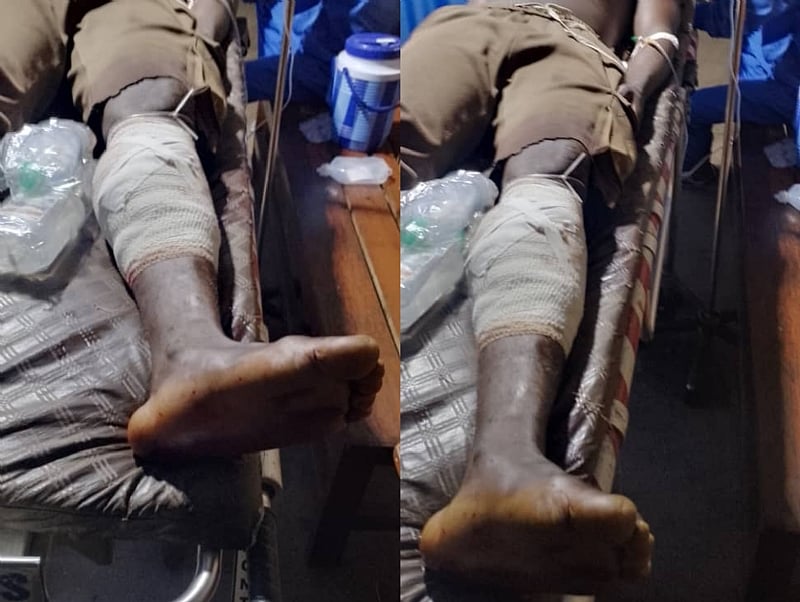The tranquility of the Kotokuom-Nyinahin road in Ghana’s Ashanti Region was shattered on the night of Tuesday, April 15, 2025, when a group of miners fell victim to a brazen armed robbery. Around 9:00 p.m., as the miners traversed this vital artery connecting mining communities, they were ambushed by suspected robbers who, according to eyewitness accounts, exhibited a chilling familiarity with the terrain. The assailants, armed and menacing, forced the miners to stop, then proceeded to dispossess them of their valuables, including cash and mobile phones, at gunpoint. The robbery, however, escalated into violence when one of the miners, 26-year-old Michael Larry, was shot in the leg, highlighting the grave danger posed by the increasingly emboldened criminals operating along this route.
The attack on the miners sent shockwaves through the community, underscoring the growing insecurity plaguing the Kotokuom-Nyinahin road. The incident left Michael Larry critically injured, requiring immediate medical attention at the Nkawie Community Hospital. However, the severity of his gunshot wound necessitated his transfer to the Komfo Anokye Teaching Hospital in Kumasi, a major referral center better equipped to handle complex trauma cases. This incident served as a stark reminder of the vulnerability of those who rely on this road, particularly miners who often carry cash and valuable equipment, making them prime targets for opportunistic criminals.
The aftermath of the attack saw a surge of fear and anxiety among local residents and the mining community. They expressed deep concern about the escalating threat of armed robbery along the Kotokuom-Nyinahin stretch, which had seemingly become a haven for criminal activity. Stanley Obeng Larry, the brother of the injured miner, confirmed the incident to Citi News and voiced his apprehension regarding the deteriorating security situation. His account, along with those of other witnesses, painted a picture of a road increasingly besieged by armed bandits, leaving those who depend on it for their livelihoods and daily commutes living in constant fear.
The brazen attack on the miners galvanized the community into action, prompting an urgent plea to law enforcement authorities. Residents and miners alike called upon the police to intensify patrols along the Kotokuom-Nyinahin road, emphasizing the need for a robust security presence to deter further criminal activity. They underscored the precarious situation, warning that without swift and decisive intervention by the police, the road would continue to be a hunting ground for armed robbers, jeopardizing the lives and safety of countless individuals. The community’s appeal highlighted the urgent need for a comprehensive security strategy to address the escalating crime rate and restore a sense of safety and security to the area.
The incident exposed the underlying vulnerability of the Kotokuom-Nyinahin road, a critical transportation link for both local communities and the mining industry. The road’s remote location and limited visibility, particularly at night, make it an ideal setting for ambushes and robberies. The absence of adequate police patrols further emboldens criminals, creating a climate of impunity. The attack on the miners served as a wake-up call, highlighting the urgent need for improved security measures, including increased police visibility, enhanced lighting, and community surveillance initiatives, to mitigate the risk of future attacks.
The Kotokuom-Nyinahin road robbery underscores the broader challenges facing Ghana’s mining communities, where the pursuit of valuable resources often intersects with security risks. The incident highlights the need for a multi-pronged approach involving law enforcement, community engagement, and industry collaboration to address the root causes of crime and ensure the safety and well-being of those who live and work in these areas. The call for increased police patrols is just the first step in a larger effort to create a secure and stable environment that supports economic development and fosters a sense of peace and security for all. The long-term solution lies in a comprehensive strategy that addresses the socio-economic factors that contribute to crime, while simultaneously enhancing law enforcement capacity and promoting community vigilance.














